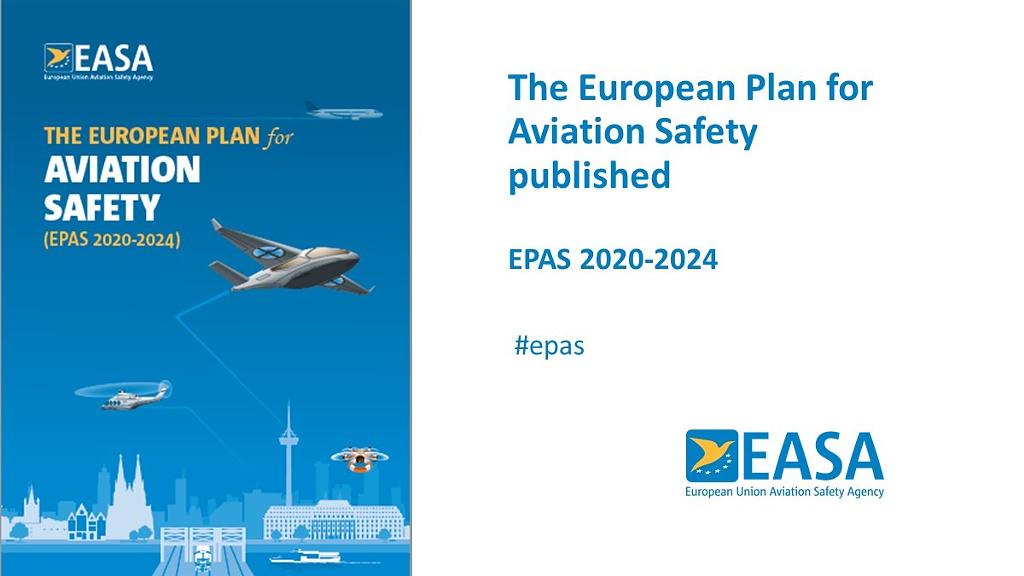2017 was considered the safest year ever in commercial aviation history; but events in 2018 and 2019 reminded us that safety can never be taken for granted.
The 9th edition of the European Plan for Aviation Safety (EPAS), published today, emphasises the importance of identifying and mitigating risks at European level and worldwide, while at the same time taking account of changing societal demands in areas such as innovation, security, capacity and environment.
Drawn up in close collaboration with its various stakeholders, the EPAS lays out the current and future work EASA will be undertaking in coming years to support the introduction of new technologies and innovative solutions.
While the steady pace to build a regulatory framework for the operations of drones will continue, regulatory actions to enable concepts such as urban air mobility or technologies such as novel propulsion systems are now already part of EPAS. These developments have the potential to further improve the level of safety whilst creating a level playing field for new business models and operating concepts.
The Agency is also stepping up its actions to create a cleaner, quieter and more sustainable aviation system in this EPAS edition. Actions related to ICAO’s Carbon Offsetting and Reduction Scheme for International Aviation (CORSIA) and the implementation of ICAO environmental standards are included.
The 180 EPAS actions contained in this edition include activities to improve our air traffic management system, address cybersecurity threats or to develop safety requirements in the area groundhandling. The Agency’s Roadmaps, proposing coordinated actions in areas such as artificial intelligence, rotorcraft or general aviation are an integral part of EPAS.
By targeting our actions to the areas where they can have the biggest impact, we ensure that safety and environmental standards are not compromised as air traffic density, and the safety risks associated with that, grow over the next decade.







